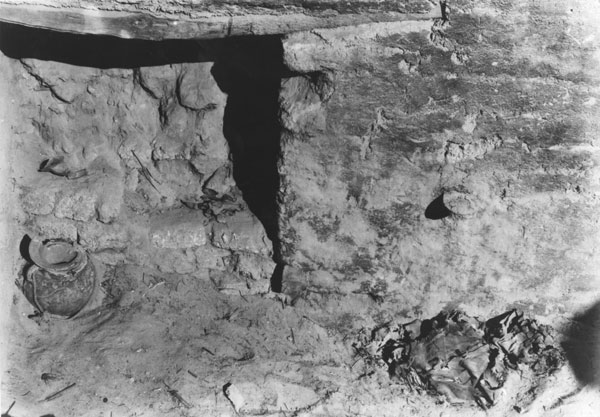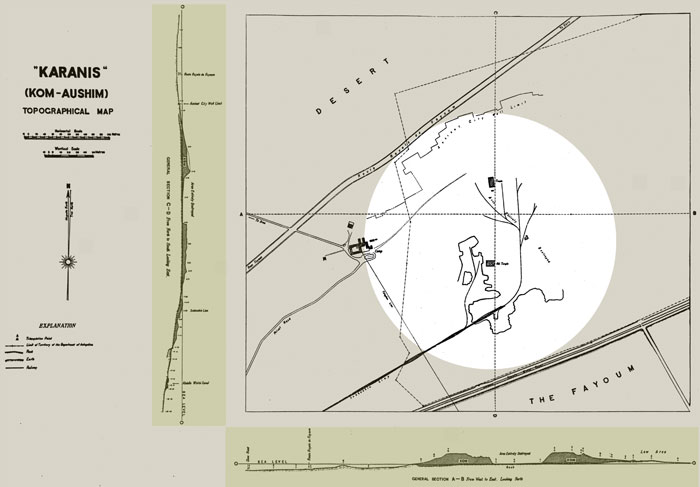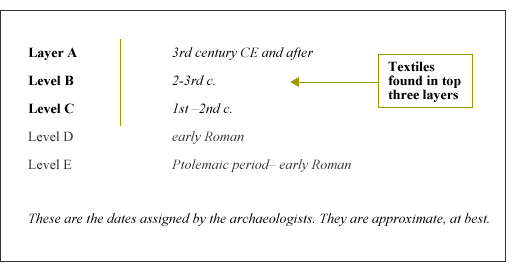
 |
 |
 |
 |
 |
 |
 |
 |
 |
Discoveries
The Importance of Karanis
The archaeologists from the University of Michigan who excavated at Karanis from 1924 until 1931 were so impressed by the rich artifactual record that they dubbed the site “The Pompeii of Egypt.” The artifacts do indeed provide remarkably detailed glimpses of everyday town life, and this aspect of the site remains important today.
 |
|
House
C85
There are no records for any of the large textiles documented in this photograph. The only notes record, “textiles N.T.H.” N.T.H. was the abbreviation for finds that were “Not Taken Home.” Karanis, 28-C85A, R Kelsey Museum Archives, 5.3744 |
The University of Michigan Expedition to Karanis
The first seasons’ excavations at Karanis, in 1924 and 1925, explored the surface of a large area around the center of town and mapped it for excavation later. The core of this area had already been destroyed by local farmers digging for fertilizer and their industrial successors in this enterprise. (This destruction is illustrated in the topographical map.)
 |
| Topographical
map of Karanis Cross-sections at the left and below highlight the destruction at the center of the mound After Husselman, Topography and Architecture, 1979 |
Textile Finds and Find Sites
The 1924 and 1925 seasons’ surface explorations found great quantities of textiles, of which approximately 3,000 pieces were allotted to the Kelsey Museum. Excavations below the surface in later seasons found many fewer textiles. Of these, only approximately 500 pieces were brought back to Ann Arbor and eventually accessioned into the Kelsey collections. (A selection of the finds from later seasons is featured in the group photograph, 7.2522.)
 It
is important to locate the find spots, then collect and analyze the data
from them, in order to reconstruct the settings in which the textiles
were deposited. When the documentation is adequate, the find sites of
the textiles may be pinpointed horizontally, that is to say, topographically,
and vertically, that is, stratigraphically. Most textiles were found in
the top three layers: designated A for surface, then B, and below that,
C. These layers date from the Roman and Byzantine periods and later. The
same types of textile artifacts were found in all three stratigraphic
layers. And in all three layers, a good many finds were found discarded
with other unwanted items in deposits of garbage (both large dumps in
open areas and small deposits of items in buildings, usually along walls).
It
is important to locate the find spots, then collect and analyze the data
from them, in order to reconstruct the settings in which the textiles
were deposited. When the documentation is adequate, the find sites of
the textiles may be pinpointed horizontally, that is to say, topographically,
and vertically, that is, stratigraphically. Most textiles were found in
the top three layers: designated A for surface, then B, and below that,
C. These layers date from the Roman and Byzantine periods and later. The
same types of textile artifacts were found in all three stratigraphic
layers. And in all three layers, a good many finds were found discarded
with other unwanted items in deposits of garbage (both large dumps in
open areas and small deposits of items in buildings, usually along walls).